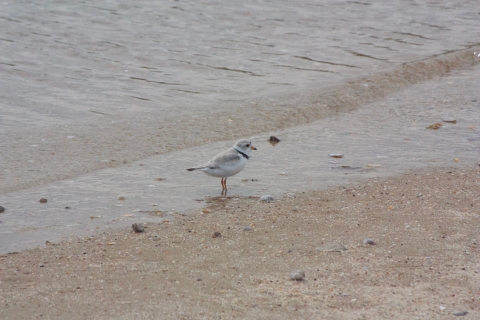Featured Species
Piping Plovers
Piping plovers, federally-listed as threatened, arrive at the refuge between mid-March and early April. Once a full clutch of eggs has been laid, the refuge erects a wire exclosure around the nest. This keeps predators away from the nest, while allowing the birds to come and go. Interns monitor hatching and fledging rates. The heaviest use of the refuge by plovers occurs in July: not only nesting adults and their young, but also adults and fledglings from other areas forage and loaf there.
Terns
Terns are highly visible species at the refuge in late spring and early summer. The most common species include two state-designated threatened species, the common tern and the least tern, and the federally-listed endangered species, the roseate tern. The peninsula at Morton Refuge is a favorite loafing site and staging area for terns, while the surrounding bays provide excellent foraging habitat for all tern species.
Osprey
The osprey, sometimes known as a fish eagle or fish hawk, is a common sight along the shoreline in the spring and summer months (March – September). Their outstretched wings can span over five feet across. Ospreys are very well adapted to catch and eat fish. They can bend their outer toe backwards and have sharp spicules on the bottom of their toes to help hold slippery fish. Osprey can also close their nostrils when plunging into the water to catch their prey. Their large hooked beak and talons help them eat the fish when it finds a resting place.



